|
Webmaster: |

A look into the Foundry and Workshops
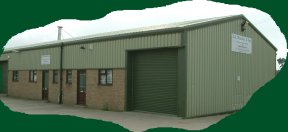
Our workshops and Foundry
The large range of products and quality we offer have to be manufactured and monitored somewhere - they are, they are done so by ourselves in our own premises, a not so common relationship of production and sales for these present times.
The majority of our castings are manufactured using the "Lost wax process" incorporating the "shell mould" system.The principal of the system has changed little in the many many years of its use, however the apparatus and materials certainly have changed, giving many new dimensions to the casting industry.
At E.J. Blackley and Son we follow that procedure to a point, however over 30 years of casting has enabled us to use the experience we have gained i.e.: the "Do's" the "Don'ts" and the "instead ofs" to give the high quality results we achieve in our Foundry.
The Wax room is the beginning of the process where the moulds - manufactured from various Rubber types, Aluminum, Sprayed or Solid Cut are selected from our stock range or ones manufactured for customers sole use.
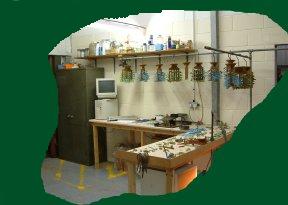 |
The wax assembly bench area. |
Correctly selected wax is injected into the mould at Low or High pressure and once set gives a superb detailed copy of the previously moulded original pattern.
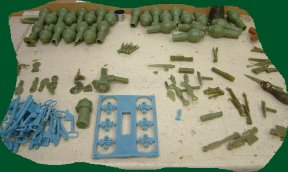 |
A selection of waxes awaiting preparation. |
The waxes are then carefully assembled onto a wax runner system to make a cluster of waxes known as a"tree" or "mould assembly".
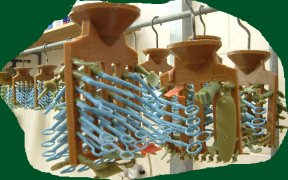 |
Wax assembly awaiting the dipping process. |
After dip cleaning the assembly is dried and transferred to the next stage....
The Dipping room or rather the conditions within it, is what dictates the finish, strength and suitability of the mould assembly and to what metal material is to be used for the finished product.
It is not unusual to apply different rules and coating applications to the moulds going through in one particular session, it all depends on the pouring materials, temperatures and requirements of a particular mould.
The treated mould assembly is dipped into a base slurry, drained and then coated with a ceramic granular, then hung up to dry. The drying conditions are monitored very precisely indeed, any deviation from the required conditions would result in a mould weak and unable to hold the mass of metal upon pouring. Alternately a mould can be to strong and can also cause problems when pouring, to strong a shell will allow metal to tear itself apart. The coating process continues with the required drying period in between, different moulds requiring different times. The number of dipped coats range from 5 to 10.
The finish dipped assemblies are then dried over a further period of time once again under extremely strict conditions.
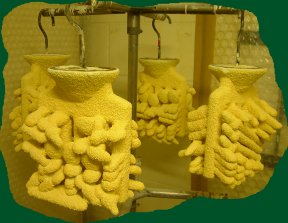 |
Moulds now finish dipped and drying on our automated drying rack. |
The Foundry is where the moulds are de-waxed and fired for strength. The mould top is removed and inverted upside down into a dewax furnace.
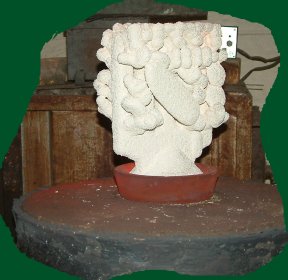 |
Ready for de-wax on oven hearth. |
The wax is removed and we are left with a shell. Once again great care is required so as not to crack the moulds with the applied heat source.
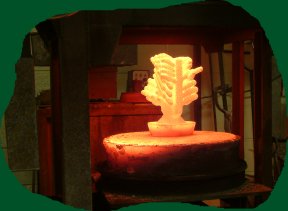 |
De-wax complete and ready for firing. |
After dewaxing the moulds are then Fired for a period, left to cool and put aside ready for casting.
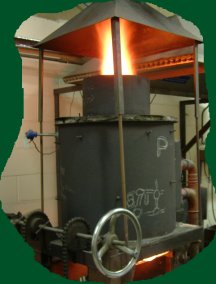 |
Moulds now being fired. |
On the day of casting the moulds are selected for the relevant material and the Steel, Brass, Bronze or other material are weighed, modified where required and then cast.
We use three different furnaces for our melting:
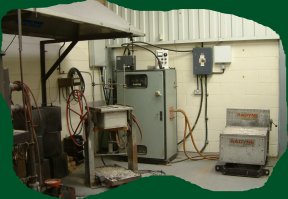 |
One corner of the Foundry, showing the Drop Down and Roll Over melting units, the Tilt unit runs from its own independent generator. |
Roll Over Unit, mainly for steel with a capacity of 12 kilos.
Tilt Unit tilts and pours metal by means of a hydraulic system, used for Steel, Brass- its alloys and Aluminium with capacity of 45 Kilos.
Drop Down Unit as above except manual pouring is required.
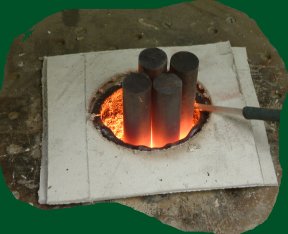 |
Steel bar melting by means of Induction, a typical mould of around 8 Kilos would take around twelve minutes to be at the correct molten temperature of between 1550c and 1675c depending on the steel type. |
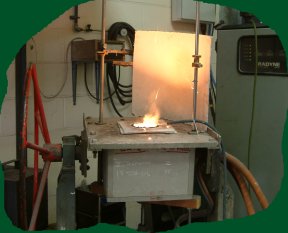 |
Steel now molten in the Rollover unit and preparation for temperature check and modification about to be undertaken. |
The mould is then positioned onto the furnace and turned to allow the steel to pour into the mould cavity. Then the mould is removed and taken to cool under controlled conditions.
After cooling the moulds are 'knocked out' to removed the majority of the ceramic shell, then 'cut off' and bead blasted to remove the last of the ceramic.
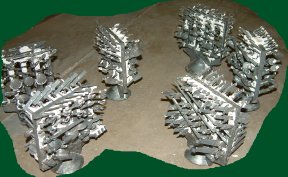 |
Moulds now 'knocked out' and ready for cut off. |
The Workshop / Machine shop is where the accessories and tools are manufactured, either from castings or of course manufactured from solid. a wide range of machinery is at our disposal for the many different areas of production our products demand.
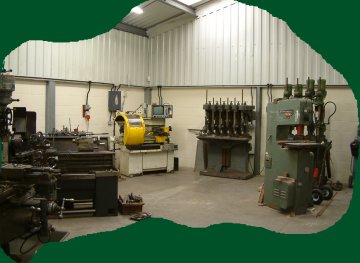 |
One corner of the spacious workshop area |
With the exception of one or two parts, we manufacture all other items we sell. We feel we are quite unique in doing so, companies actually manufacturing crafted items today is far from common place. We seem to be more and more a "stock it and sell it" country offering imported goods with much of the emphasis on cost and related savings. Admittedly costs are an important issue in business however it is often seen to come foremost to quality.
We are very proud of the products we manufacture and the services we offer and so long as our Government permits us to do so, we will continue to supply customers with that extra bit of quality that we feel is still desired by many.